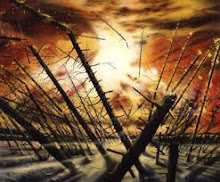Chelyabinsk, Russia (CNN) -- A day after a spectacular meteor blast shook Russia's Urals region, the cleanup operation got under way Saturday in the hard-hit Russian city of Chelyabinsk.
Although some buildings were unscathed when sonic waves from the Friday morning explosion reverberated through the region, others lost some or most windows or had walls come tumbling down.
More than 1,000 people were injured, including more than 200 children, according to news reports. Many of them were hit by flying glass.
Most of those hurt were in the Chelyabinsk region; the majority of injuries are not thought to be serious.
However, one woman was flown to Moscow to be treated for a spinal injury resulting from the shock wave from the blast, state media reported. About 50 people were still hospitalized Saturday.
Altogether, more than 4,000 buildings, mostly apartment blocks, were damaged and 200,000 square meters (77,220 square miles) of glass were broken, the state-run RIA Novosti news agency cited the Chelyabinsk regional emergencies ministry as saying Saturday.
Local officials have estimated the damage at more than 1 billion rubles (more than $33 million), RIA Novosti said. Chelyabinsk Gov. Mikhail Yurevich promised compensation to all those affected, the official Itar-Tass news agency said.
With temperatures dipping well below freezing at night, the need to fix windows left gaping by the blast is urgent.
The city of Chelyabinsk was functioning normally Saturday as the repair work began.
Workers swept up broken glass, boarded up holes and began fitting new panes of glass in some buildings.
"This is no exaggeration"
Residents told CNN of their shock as they saw, heard and felt the awesome blast, and the chaos and confusion they witnessed in the moments afterward, when no one knew what had happened.
Many were relieved nothing worse came to pass and believe the city had a lucky escape as fragments of the meteor came raining down.
Denis Kuznetsov, a 23-year-old historian from Chelyabinsk, told CNN via e-mail that he had heard and felt the shock wave despite being far from the center of the city.
At first there was a blinding flash lasting several seconds, which made him want to shut his eyes. The light shone "like 10 suns," he said. "This is no exaggeration."
Kuznetsov said he experienced what felt like "a push," as a sound wave passed through his body. "For some seconds I simply stood," amid the sound of breaking glass, he said.
After calming his parents, Kuznetsov tried to call friends, but all cellphone coverage was down. The Internet still worked, however, and he managed to reach a friend in the city center who told of emergency responders heading into the streets.
At first, confusion was widespread, he said, with many people believing the boom had to do with a satellite or plane. But within an hour or so, news broadcasts declared it was a meteorite.
"There was no panic. All behaved quietly," he said.
Schools and many offices closed. Kuznetsov monitored the news, as the reported number of victims "grew hour by hour," he said. "Thank God no one died."
CNN iReporter Max Chuykov saw the meteor trail from the city of Yekaterinburg. He shared on Instagram that it was close to the ground.
Ekaterina Shlygina posted to CNN iReport and wrote on Instagram: "Upon Chelyabinsk a huge fireball has exploded. It wasn't an aircraft."



